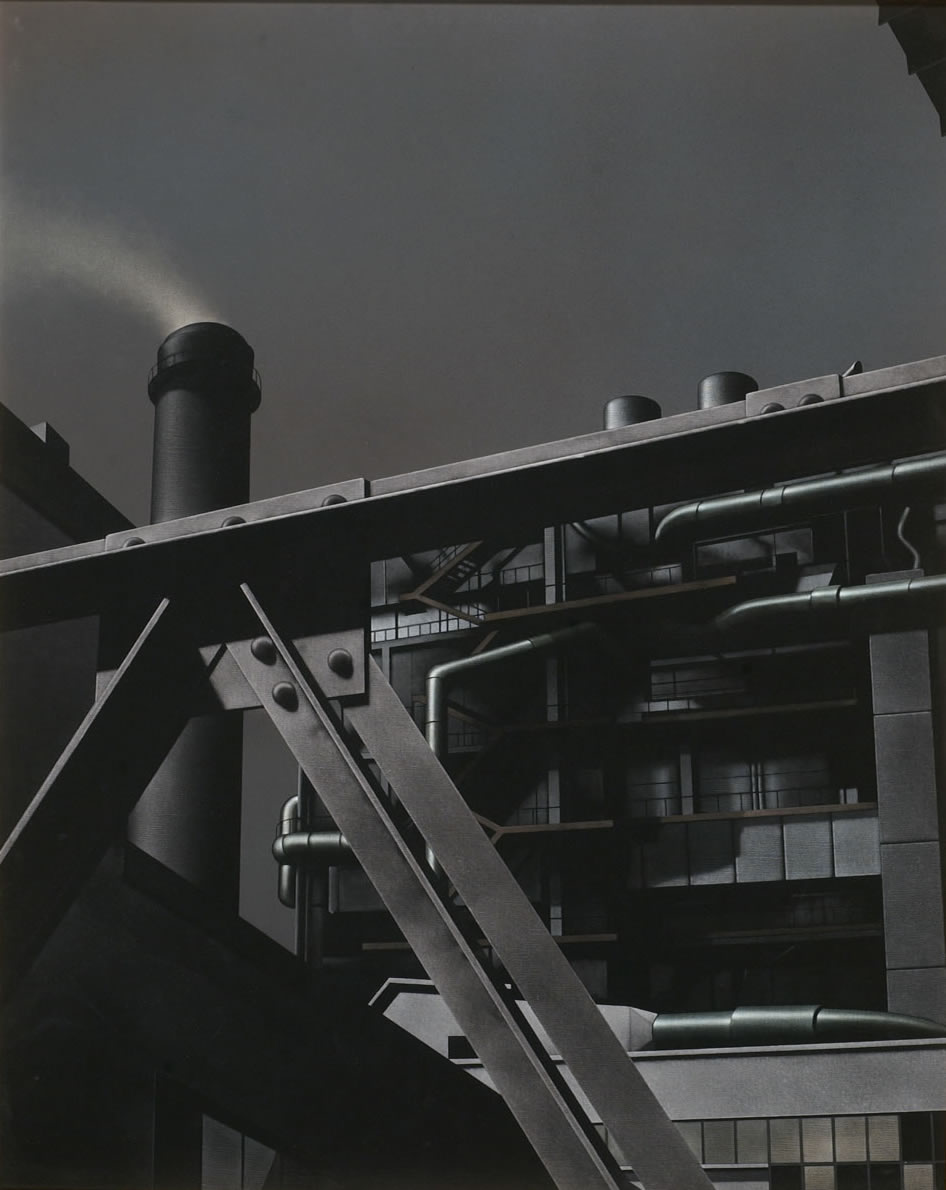Marco Fidolini was born in San Giovanni Valdarno in 1945. He is a painter, engraver, and essayist. In 1965, he made his debut in the art world with an exhibit at Galleria Vigna Nuova in Florence. In the 1970s, he began working on his first etchings. Soon thereafter, engraving and printing would go hand in hand with painting, aiding the artist to delve into metropolitan-industrial iconography. Around the mid-1990s, Fidolini gave life to a series of objects-sculptures drawing on Etruscan coroplast tradition. The artist exhibited his oeuvre at numerous national events. A collection of sixty etchings is conserved at the Gabinetto di Disegni e Stampe (Department of Prints and Drawings) of the Uffizi Gallery.

– title: Ciminiera e generatore multitubolare
– date: 1982
– medium: acrylic paint, black and burnt sienna on canvas
– size: 107x 86 cm
– description: Ciminiera e generatore multitubolare was donated by Marco Fidolini to the Municipal Collection of Contemporary Art of San Giovanni Valdarno after he held his solo show Atmos e Thanatos, which was housed at Palazzo d’Arnolfo in 1983. The construction of the image, together with its metallic colours and a leaden sky, brings to mind landscapes and atmospheres borrowed from paintings of the New Objectivity movement, or from the film Metropolis (1927), giving shape to a pictorial language winking at science fiction and creating timeless images, caught in an undefined present. The work relies on a forced realism to depict a portion of a factory, as is implied by the title, with no sign of human presence. The painting displays all the distinctive and most recurring elements of the artist’s exploration, which addresses a plethora of urban and industrial images, in constant balance between admiration and fear for the perfection of machines, while man often plays a marginal role. The composition of Ciminiera e generatore multitubolare underlines the overwhelming presence of the factory, which darkens the sky with its smoke and miasmas, and highlights the artist’s intention to portray the industrial building as a threatening monument.